Nearly two years ago, I took a look at the HyperMegaTech Super Pocket, specifically the Taito edition, back when it was $49. Two years later, the price has gone up, but is it worth $69 now? Not nice. Which version should you get?
Especially since they’ve gone about releasing Super Pockets for four more companies since their original release. Well, thanks to the marketing team for Blaze for sending over its Technos edition, I’ve got the chance to re-review, find what’s changed, and decide if the $20 extra is still worth your money.
Super Pocket TECHNOS Edition Specs
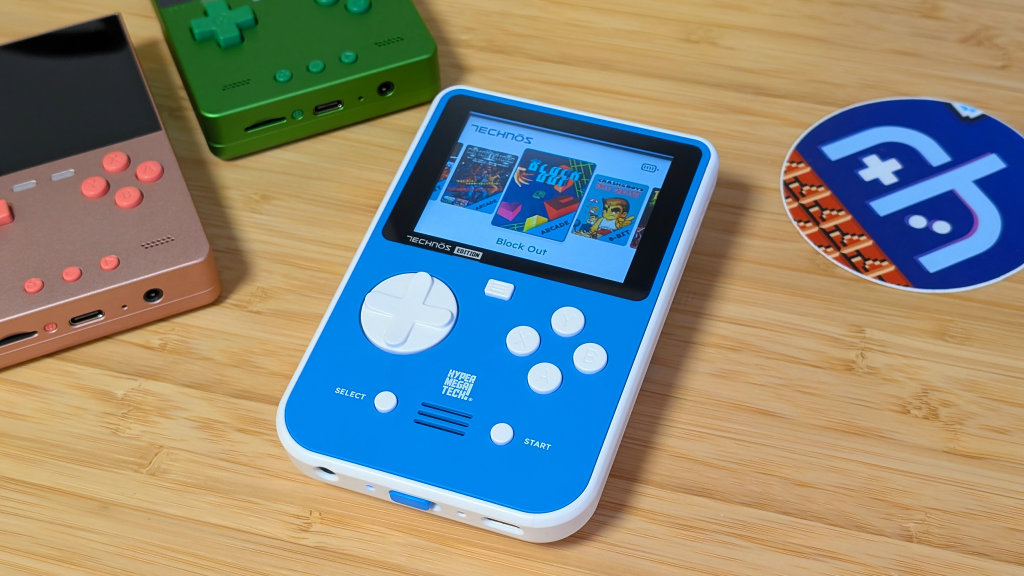
As mentioned, the Super Pocket used to be $49, but with the state of the world, particularly in America, which is our largest audience, the price has gone up to $69. Despite that, the specs aren’t really different from the original. Most specs are unknown, but what is known is as follows.
- CPU: 1.2GHz Cortex-A7 Processor
- Battery: Unlabeled, but listed as “Up to 4 hours”
- Screen: 2.8” 320×240 IPS
- Connectivity: Wi-Fi, USB-C, Evercade Cartridge Slot
- Weight: 165 grams
- Dimensions: 125 x 75 x 27mm
Ergonomics and Controls
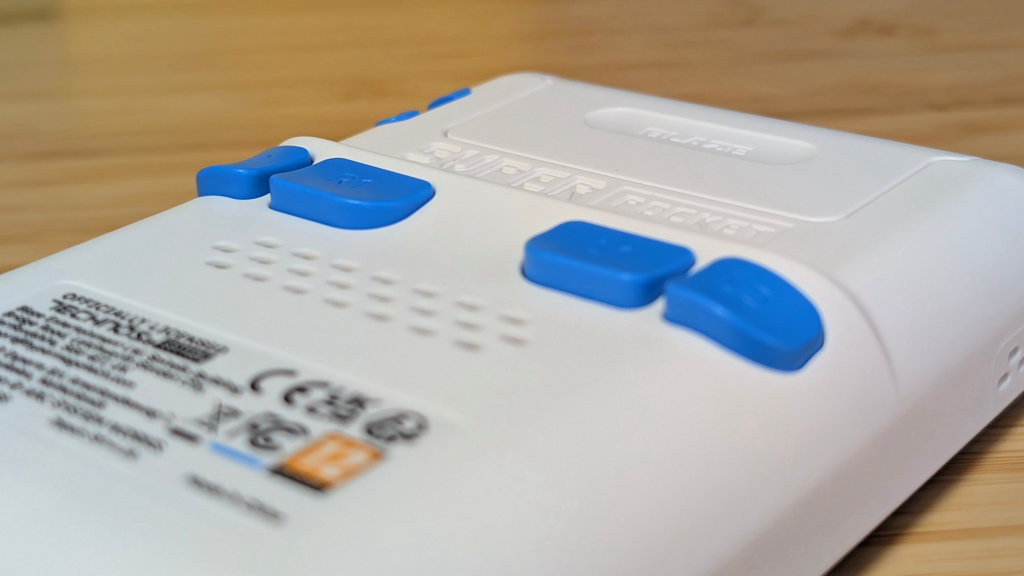
This is going to be a bit of a mixed bag for most users. The controls on the Super Pocket are fine. The four membrane face buttons have a good bit of tension above a membrane press and are nice and accurate. The strangely shaped D-pad features a nice pivot, and doesn’t seem to be overly sensitive to diagonals like some handhelds out there that cost even more by comparison. With that in mind, the controls and ergonomics take a downturn on the back.
On the back of an awkwardly curved device, you find four flat shoulder buttons. There’s no ledge, no clicky button, and nowhere else to put your fingers. These shoulder buttons are fine to use, but awkward to reach for any period of time longer than a single press. It’s a shame because they feel like good buttons. I just wish they were placed on a ledge or shelf or something. Because this is not it. As a whole, though, if you’re just using the face buttons, it’s a lot nicer to press.
Screen
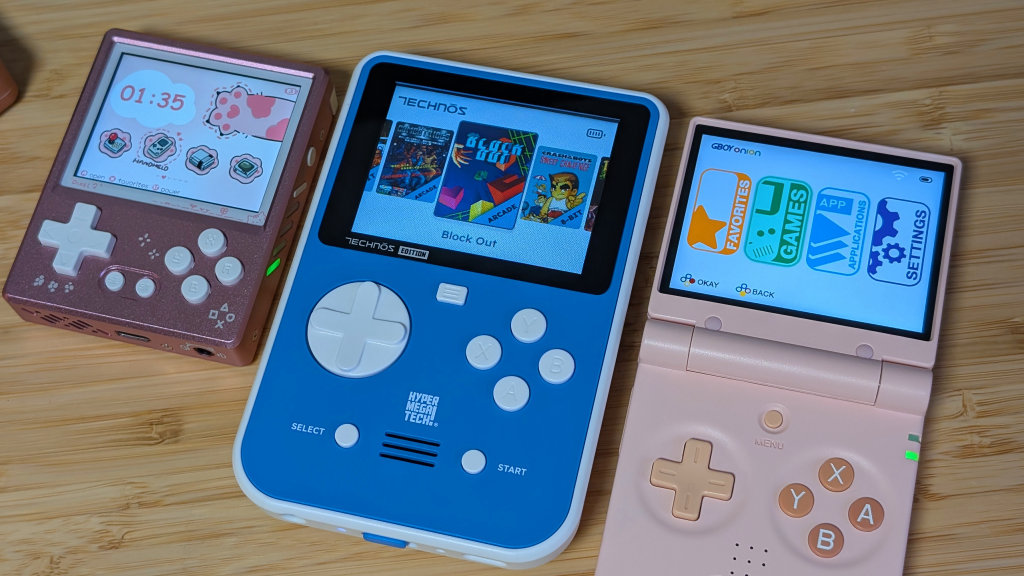
This is a screen that isn’t going to win any awards. At 2.8” you’re looking at a smaller panel than most emulation handhelds at this price point. At a similar or lower price point than the Super Pocket you could get a 5” panel on a TrimUI Smart Pro, a 3.5” panel on half of the market of 3326 devices. Or even a 3.2” screen on something like the TrimUI Brick, which is still smaller than the Super Pocket in size. On top of that, the 4:3 aspect ratio means you can expect black bars on any 16:9 or 3:2 content, making that 2.8” display even smaller than that for certain games.
In positive news, the viewing angles are good, and the screen gets bright enough for normal use. On top of that, compared to my Limited Edition Capcom and Taito Super Pockets, the Technos unit I was sent seems to have less, if any, light bleed on it by comparison. So while not a great screen, it seems to be improved from the originals.
Gameplay Experience

When it comes to the Technos Super Pocket in particular, you’re getting a collection of 15 games across the platform. And that includes the following.
- Double Dragon
- Double Dragon (8 Bit)
- Double Dragon (8 Bit Handheld)
- Double Dragon II: The Revenge
- Double Dragon 3 The Rosetta Stone
- Block Out
- Crash N’ The Boys: Street Challenge (8 Bit)
- Minky Monkey
- Mysterious Stones: Dr John’s Adventure
- Renegade
- River City Ransom (8-bit)
- Super Dodge Ball
- Super Double Dragon (16 Bit)
- Super Spike V’Ball
- The Combatribes
It’s an interesting collection of games, and if you like Double Dragon, there are 6 games right there and set up for you to play. All of the following play well, and luckily enough, I do enjoy some Double Dragon here and there, and this felt like a good choice to use with this handheld specifically. I will say, though, that I’m not too good at Super Dodge Ball. Maybe I’ll do better next time.
That being said, other cartridges boot up and run well alongside it. A few personal favorites of mine include #11 Xeno Crisis/Tanglewood, #35 Goodboy Galaxy/Witch N’ Wiz, and #25 Morphcat Collection 1. To be fair, the Home Computer and Arcade carts work well too, but I really enjoy limiting how many games I can play at once, and those are just a few of my favorites. But there’s more to be said about the Evercade library as a whole.
The Evercade Library
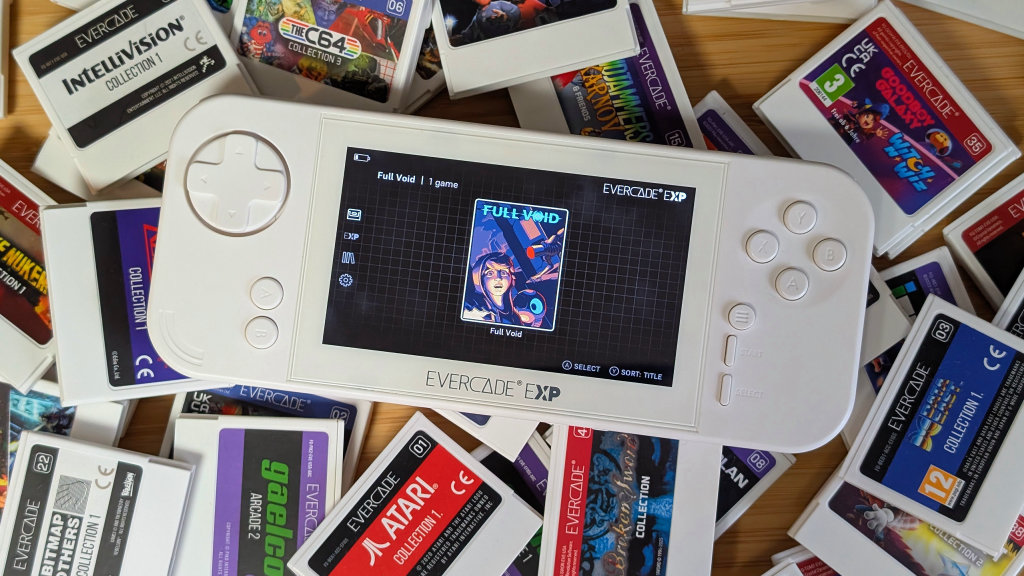
When I last reviewed the Super Pocket, Evercade had 8 Arcade Carts, 1 Home Computer Cart, and 28 Classic Cartridges. Sitting in at the end of 2025, we’re now pushing into 18 Arcade Carts, 9 Home Computer Carts, and 46 classic cartridges, with another 5 in pre-order coming before 2026 starts. The library of Evercade continues to grow with new and more diverse games, and as they grow, my collection of carts grows as well.
If you’re looking for just Arcade games, Neo Geo, Data East, and Toaplan have a number of carts with dozens of games that could satiate any need you have for something like the Super Pocket. If you’re looking to try new games or ported classics, the Indie Heroes collection carries with it a load of little gems if you’re willing to give them a try. Donut Dodo is really good on the Super Pocket (Indie Heroes Collection 3), and Deadeus is worth a go around too (Indie Heroes Collection 1).
The big complaint comes from the loss of licenses that leads to a legacy cart too soon. At that point, you can’t buy these anymore, and their prices on ebay or other markets shoot up in price by comparison. It isn’t Blaze’s fault, but that’s what leads more people to buy EverSDs or just more emulation handhelds instead.
Final Thoughts
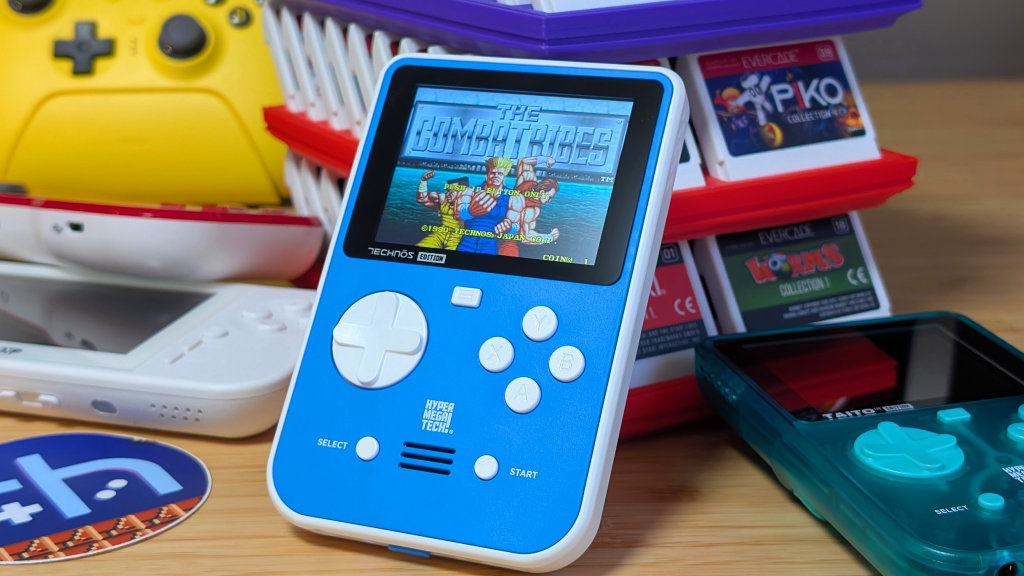
If you want to stick with physical cartridges on the cheap end, the Super Pocket does that. If your collection consists of about half a dozen carts and not much else, you can get that done for under $200 and be happy with a physical collection. One that makes you aware of what games you have and what games you can play. But if you want to own most of the Evercade collection, I might recommend upgrading to something like the recently released EXP-R Retro Colorway.
On the other hand, if you really want to spend as little as possible to play like 20 games, emulation handhelds are still an option. The BatleXP G350 could be set up for a small arcade library and just be set to go, while having a larger, brighter screen. But for some reason, a physical collection and a cartridge you have to put in just feels better. And when I want to limit myself to games, this or an Evercade is the exact thing I’d grab.
What did you think of this article? Let us know in the comments below, and chat with us in our Discord!
This page may contain affiliate links, by purchasing something through a link, Retro Handhelds may earn a small commission on the sale at no additional cost to you.

I ordered something from this site two months ago but it hasn’t been delivered yet, so it’s better not to order anything from this site.https://themakerdepot.com/senna-smart-glasses/